How to Do an Easter Egg Hunt with Your Dog: A Step-by-Step Guide
Easter festivities often bring families together, and there’s no reason your furry family member shouldn’t join in the fun. An Easter egg hunt designed for dogs is a fantastic way to include your pet in the holiday celebrations. It provides mental stimulation and physical exercise, turning a traditional human activity into a dog-friendly event. Planning and executing a dog-centric Easter egg hunt is both rewarding and entertaining, ensuring everyone, including your four-legged friend, is part of the joyous occasion.
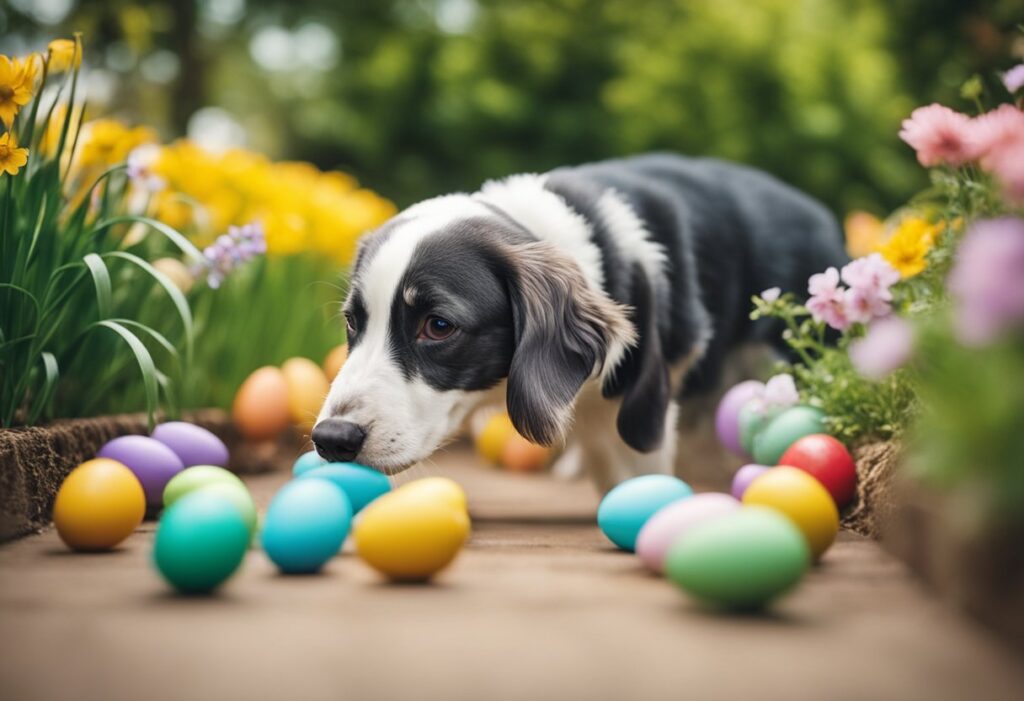
When organizing your dog’s Easter egg hunt, remember to keep safety as your top priority. Chocolate and xylitol, commonly found in Easter treats, are toxic to canines, so these should be kept far away from your dog’s reach. Instead, use dog-friendly treats hidden inside plastic eggs, or consider using special treat dispensing toys that add an extra layer of challenge and excitement for your pooch.
As with any holiday event, a successful dog Easter egg hunt requires some preparation. Familiarize yourself with the do’s and don’ts, such as teaching basic commands to ensure your dog’s safety and creating an enjoyable experience. With these considerations in mind, you’ll create a memorable holiday event that safely includes your canine companion in the Easter festivities, making it a joyful time for the entire family.
Preparing for the Easter Egg Hunt
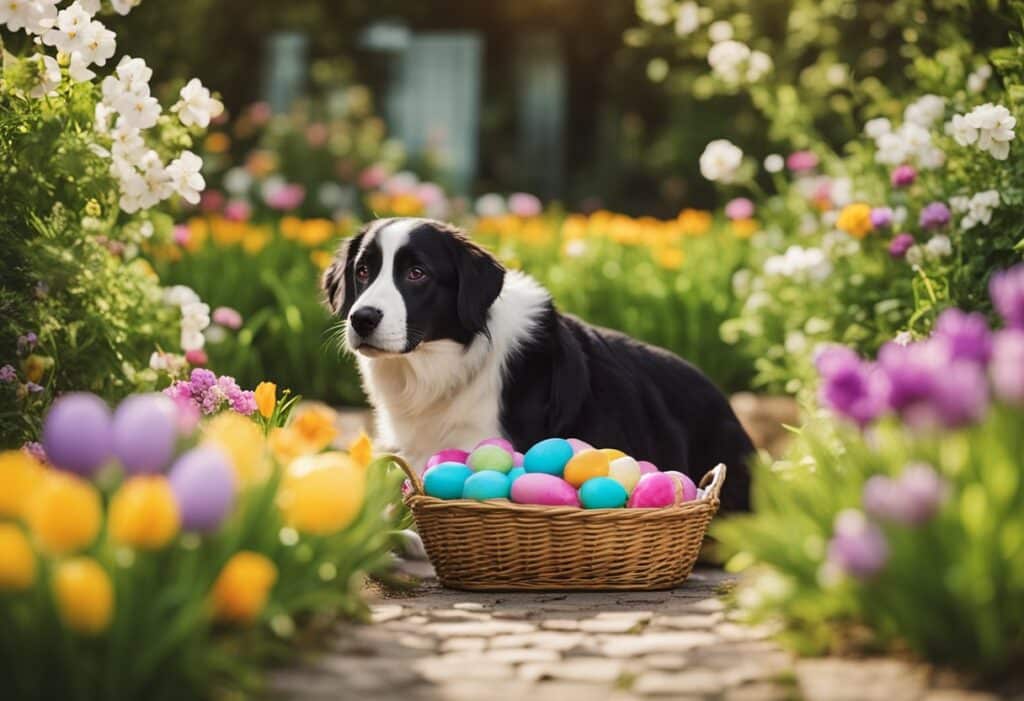
Easter egg hunts aren’t just for kids; your furry friend can join in the fun too! The preparation stage is crucial to ensure the hunt is a joyful and safe activity for your dog.
Choosing the Right Eggs
It’s best to use plastic Easter eggs for your dog’s Easter egg hunt. Unlike real eggs, plastic versions won’t break and spoil, and they create a consistent size for hiding dog treats. Choose eggs that are large enough not to be a choking hazard. Fill them with small, pet-friendly treats that are free from toxic substances like chocolate, which is harmful to dogs.
Creating a Safe Environment
Safety first: Always hold your Easter egg hunt in a safe, fenced-in yard where your dog can’t run off. Remove any dangerous items they could swallow, and check for plants that could be toxic to pets. The area should be free of sharp objects and ensure all gates are securely closed to prevent your furry friend from dashing out during the excitement of the hunt.
Training Your Dog for the Hunt
Before the actual event, familiarize your dog with the game by practicing in a controlled environment using the plastic Easter eggs. Start with the eggs in plain sight and use commands they know, such as “find it!” or “seek!” As they get better at the game, you can make the eggs more challenging to find. Always reward them with dog treats after they successfully retrieve an egg to reinforce positive behavior.
Conducting the Easter Egg Hunt
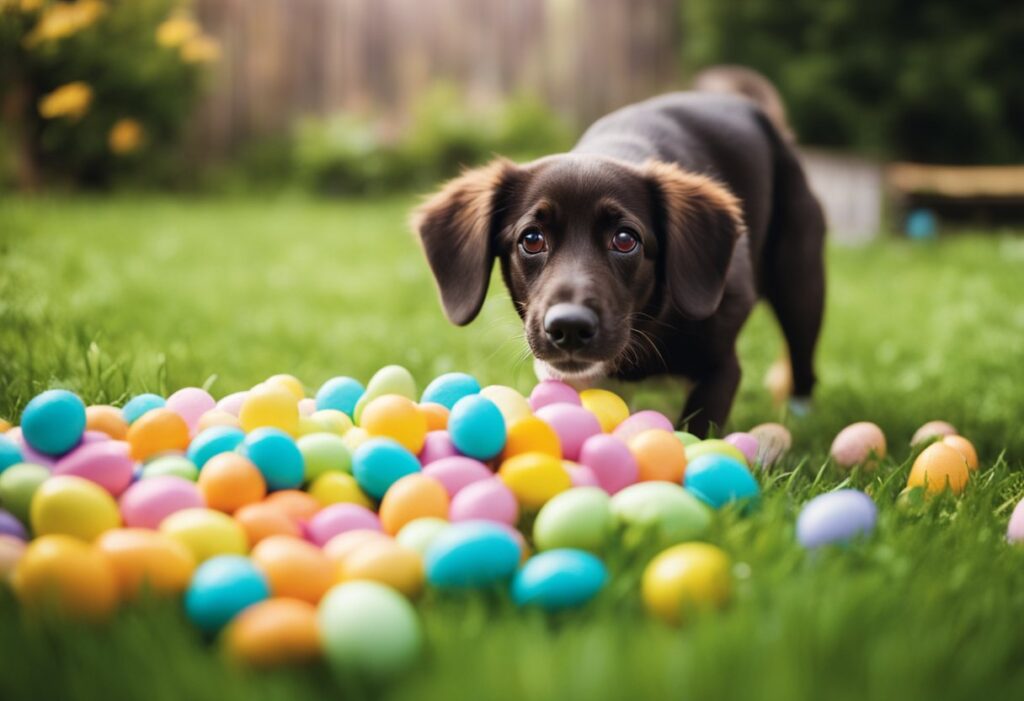
When you’re ready to start the Easter Egg hunt with your dog, planning and supervision are key. Ensuring the safety of both children and dogs while maintaining the festive spirit of the occasion will make for a joyful family holiday tradition.
Hiding Techniques
When selecting hiding spots for the eggs, keep your dog’s sense of smell and safety in mind. Choose locations that are within reach and in line with leash laws if you’re in a public park. It’s best to avoid placing eggs in areas where dogs might have to dig or disturb plants. Here are some ideas:
- Open Areas: Place eggs in plain sight on the lawn for easy discovery.
- Under Objects: Hide eggs under lightweight items or in shallow nooks where your dog can easily retrieve them without risk.
Supervising the Hunt
As the eggs are being sought after, make sure to supervise the hunt closely. If children are present, instruct them on how to interact with the dogs appropriately to prevent any conflict. Keep these points in mind:
- Safety First: Monitor the dogs to ensure they’re not consuming anything harmful.
- Boundaries: If you’re at a public park, be cognizant of boundaries and leash laws.
Managing Children and Dogs
Integrating children into the event requires additional attention:
- Teach and Guide: Explain to the children how to safely treat the dogs during the hunt.
- Separate Hunts: Consider having separate hunts for children and dogs if necessary to manage excitement levels and minimize potential conflicts.
Be sure to capture pictures and videos of all the fun.
Ensuring a Rewarding Experience
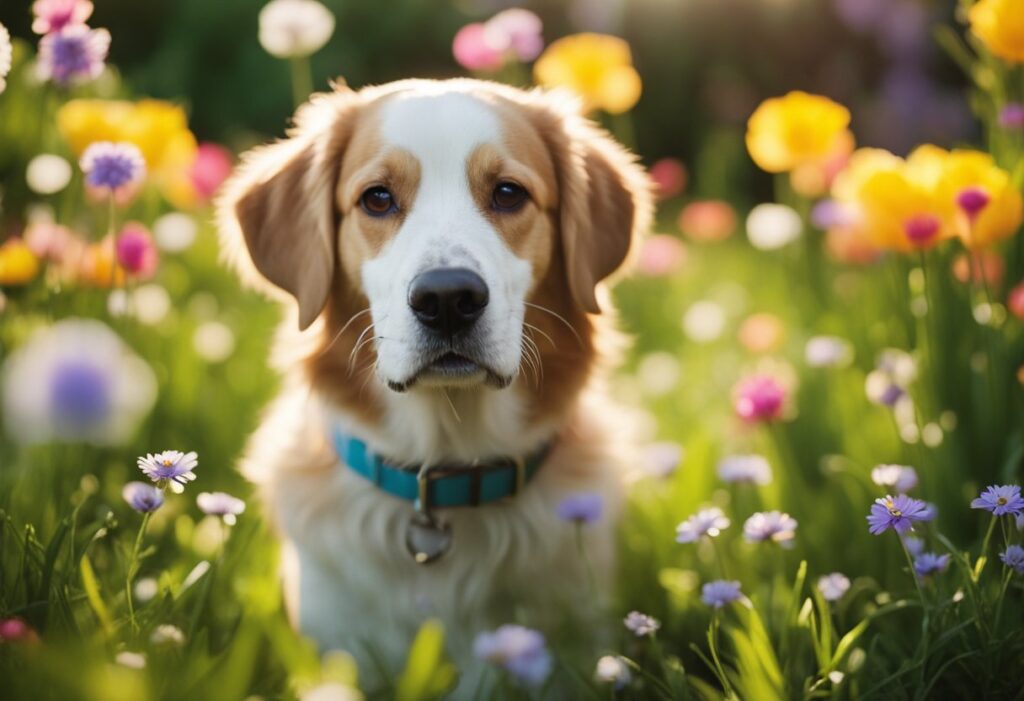
To ensure a rewarding experience during an Easter egg hunt with your dog, it’s essential to set up a system that not only motivates your pup but also strengthens the bond between you. A well-thought-out reward system, attention to the choice of prizes, and a joyous post-hunt celebration can make the event memorable.
Implementing Reward Systems
Your dog will be more engaged in the hunt if they know that finding an egg leads to immediate gratification. Here’s how you can set it up:
- Kibble: Scatter some of their regular kibble inside plastic eggs to make them enticing. Ensure the treats are safe for canine consumption.
- Peanut Butter: A small dab of peanut butter can also be a delicious surprise. Remember, only use xylitol-free peanut butter.
- Kong Toy: Consider hiding a Kong toy that’s been stuffed with treats as a special find.
Special Considerations for Prizes
Not all eggs have to contain the same treasure. Create varying levels of excitement with these tips:
- Golden Egg: Designate a “golden egg” that contains a grand prize such as a new toy or a high-value treat.
- Easter Baskets: Prep small Easter baskets as the ultimate reward for a job well done, filled with a mixture of treats and toys.
Post-Hunt Celebration
Once the hunt is over, spend quality time with your dog to turn their hard work into a bonding experience. Try the following:
- Affection: Offer plenty of affection with pats and cuddles to show your dog how proud you are.
- Playtime: Engage in a play session with their newly discovered toys, reinforcing the fun of the day.
After the Easter Egg Hunt
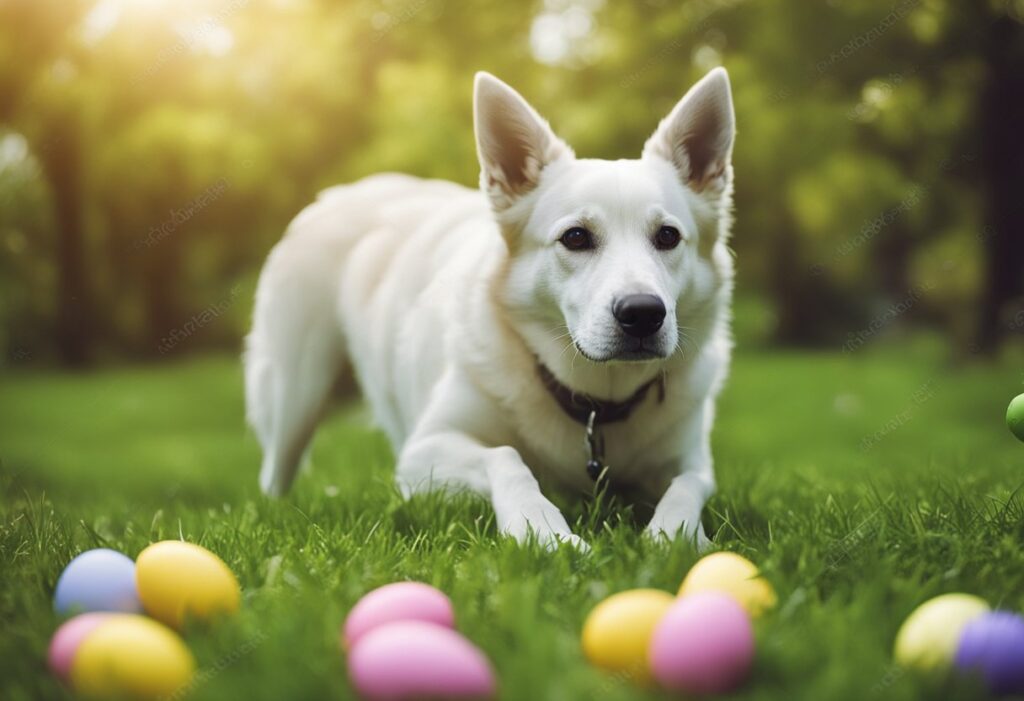
After the Easter egg hunt comes to a close, it’s essential for pet parents to ensure the area is clear of any hazards and that your dog remains healthy and happy after the fun activities.
Cleaning Up
To start with clean up, work methodically through the space where the hunt took place, ensuring that no items were left behind. This includes:
- Hard-boiled eggs: All must be collected, as rotten eggs can cause health issues if consumed later.
- Plastic eggs and wrappers: Gather every piece of plastic to prevent accidental ingestion.
- Leftover treats: Can attract unwanted pests or contribute to resource guarding if found by your dog after the event.
Remember, keeping the area tidy not only ensures safety but maintains the beauty of the springtime setting, be it your yard or a community dog park.
Safety and Health Checks
Post-hunt safety tips include a thorough inspection of your dog for any signs of distress or ingestion of harmful items. Pay attention to:
- Allergies: Monitor for any abnormal reactions, especially if novel treats were used.
- Resource guarding: Be on the lookout for any territorial behavior emerging from the day’s activities, providing appropriate training or intervention if needed.
- Mental stimulation: The hunt provides mental exercise, so your pet might need rest to recover from the excitement.
Conduct a general health check to make sure your dog didn’t consume something hazardous or escape unnoticed from the secure area during the hide-and-seek festivities. It’s recommended that you stay up to date with safety protocols provided by reputable organizations like the AKC.
Frequently Asked Questions
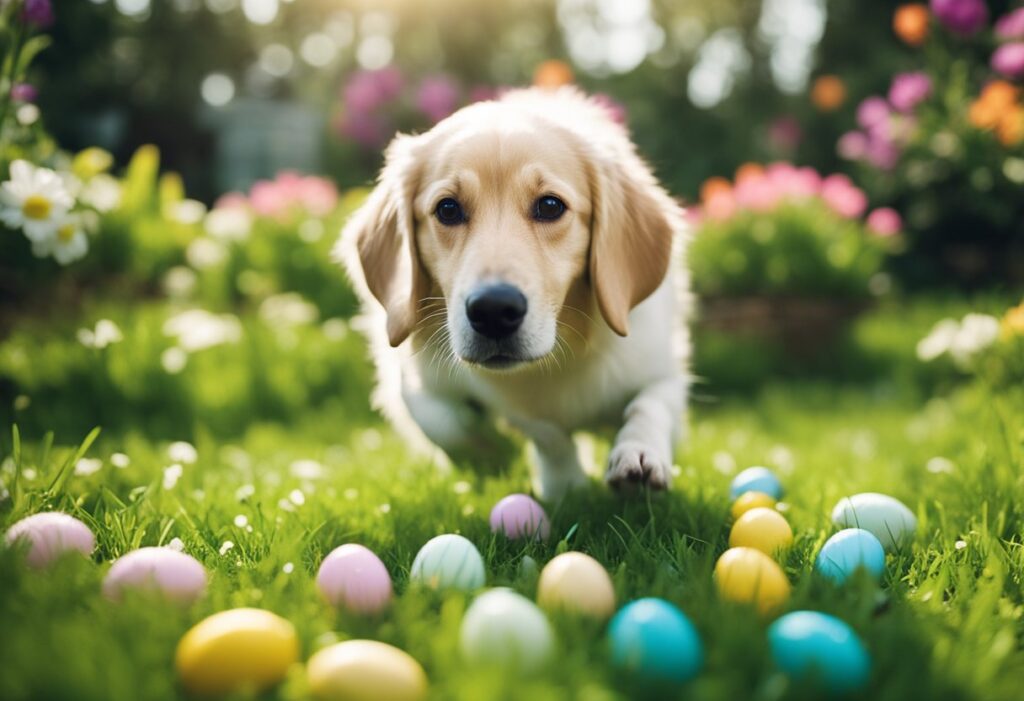
When planning an Easter egg hunt for your dog, it’s important to consider safety, suitable treats, and how to make the event enjoyable for them. Here are some common questions to help you create a memorable experience for your furry friend.
Can I give my dog chocolate Easter eggs?
Absolutely not. Chocolate is toxic to dogs, and even small amounts can lead to chocolate poisoning. Always keep chocolate Easter eggs out of your dog’s reach.
How can I safely involve my dog in a family Easter egg hunt?
To safely include your dog, keep them on a leash to prevent them from ingesting harmful objects or treats not meant for them, and use dog-friendly treats in the plastic eggs.
What are appropriate treats to hide in eggs for a dog Easter egg hunt?
Fill eggs with dog treats or kibble that are safe for your pet to eat. Ensure the treats are an appropriate size to prevent choking.
What kind of non-edible items can I use for a dog-friendly Easter egg hunt?
Consider hiding dog toys or chew items that encourage play and are safe for dogs. Make sure they are durable and the right size for your dog.
Are there any special considerations for keeping an Easter egg hunt safe for puppies?
For puppies, use larger eggs to reduce choking risks and avoid small, swallowable items. Monitor them closely during the hunt to ensure they’re not eating anything dangerous.
How do I create a fun Easter egg hunt for my dog indoors?
Set up an indoor hunt by hiding treats or toys behind furniture or under rugs. Create easy and fun hiding spots to keep your dog engaged and safe within the home.
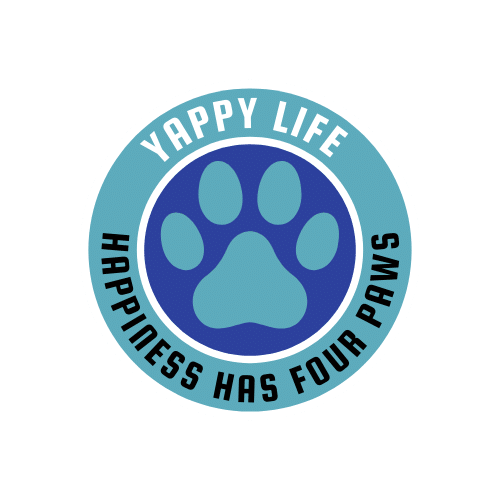
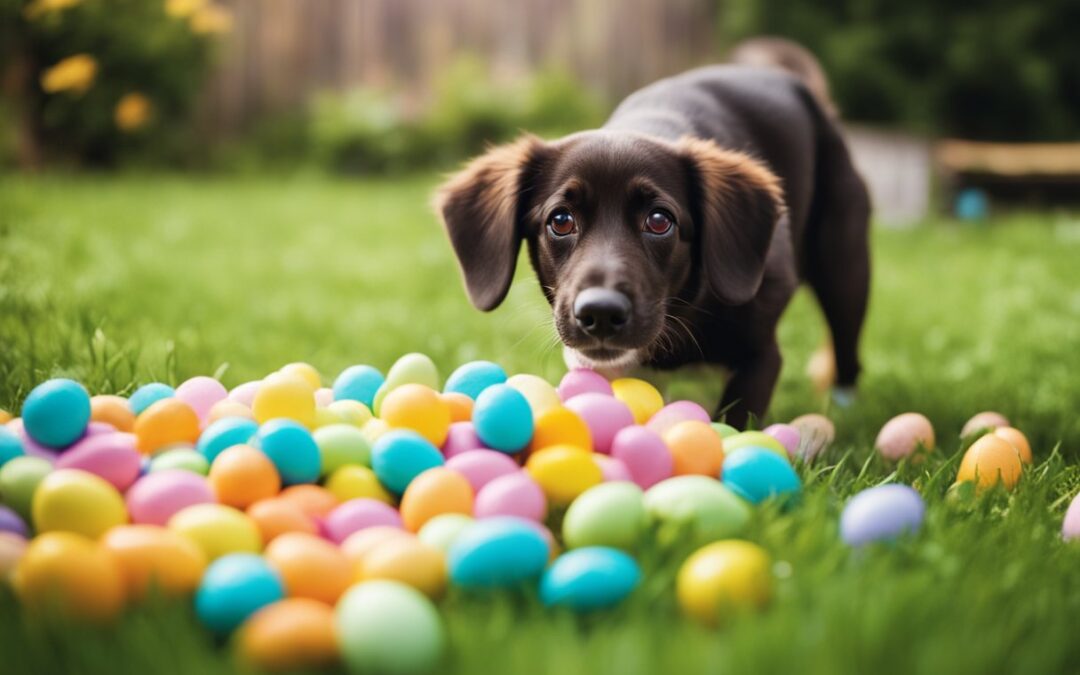
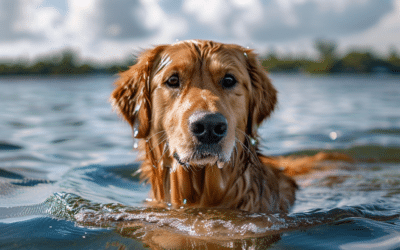
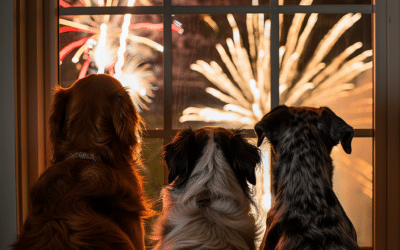
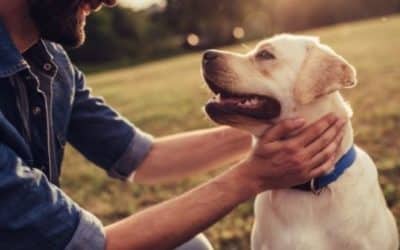
Recent Comments